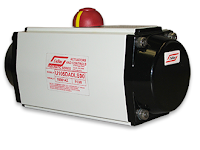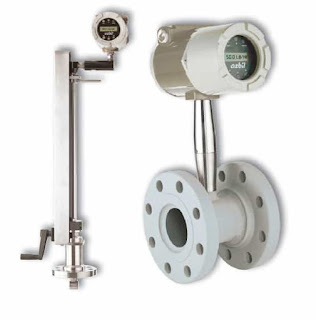 |
| Jet Pump (courtesy of Emerson Penberthy) |
Also known as eductors, jet pumps operate on the principles of fluid dynamics. An operating fluid medium, which is referred to as the MOTIVE, placed under pressure, enters the inlet and is forced through the nozzle where it is converted into a high-velocity stream. This high-velocity stream decreases the pressure in the suction chamber, creating a partial vacuum that draws the suction material into the chamber where it is entrained by the motive medium. Once the SUCTION stream is drawn in, shear between the motive medium and the transported material causes both media to be intermixed and pumped out the DISCHARGE outlet, dispelled at a pressure greater than that of the SUCTION stream but lower than that of the MOTIVE. This basic principle of fluid dynamics is what makes jet pumps work.
MOTIVE:
This function is the power phase of the pumping operation. At this stage, the velocity of the motive medium increases as it passes through a nozzle. This phase of the pumping operation takes advantage of the kinetic properties of the motive medium, whether it is liquid, steam or gas. Because of this, design differences may exist within the motive connection of the jet pump.
For instance, jet pumps with liquid motives use a converging nozzle, since liquids usually cannot be compressed. On the other hand, jet pumps with gas or steam motives use converging/ diverging nozzles to achieve transsonic flow velocity. The critical flow paths of all jet pumps are machined smoothly with no abrupt turns or steps in order to produce the most efficient flow during the motive function. Without this direct flow design and smooth interior surface, the jet pump would not operate at peak efficiency.
 |
| Click for larger view. |
This connection is where the pumping action takes place. The high velocity stream of the motive causes a drop in pressure in the suction chamber. This allows pressure in the suction vessel to push a liquid, steam or gas into the suction chamber of the jet pump. This, in turn, is entrained by the high-velocity motive stream emerging from the inlet nozzle.
DISCHARGE:
As the motive flow combines with the suction medium, some kinetic energy of the motive is transferred to the suction, mixing and discharging at a reduced pressure. The amount of pressure that can be recovered depends on the ratio of motive flow to suction flow, plus the amount of suction pressure built up in the suction vessel. Kinetic energy is converted back to pressure as the mixed media passes through the diverging taper and is discharged from the pump.
For more information about jet pumps and their applications, contact Piping Specialties, Inc. by calling 800-223-1468 or by visiting their web site at https://psi-team.com.







